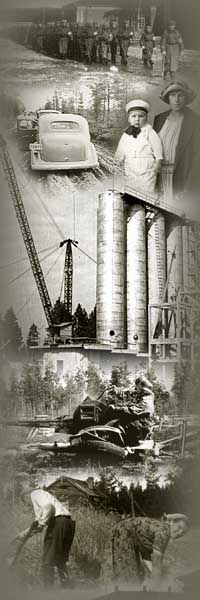 |
 |
|
Summary:
Olavi K. Fält, Information
as a resource: Yokohama and Oulu as meeting points of international
information from the establishment of the towns to the 1870s
The starting points for this study have been the
recent international public discussions about information and its
nature as well as Jeremy Black’s interpretation that the ability
to gather, manipulate and exploit information has given the western
world a clear, strategically significant advantage and has proven to be
crucial for western economic development in comparison with non-western
cultures. Thus, Black’s conclusion emphasises how information is
a resource, which again can be linked to Robert P. Clark’s
interpretation of world history as the history of globalisation.
Globalisation, i.e. increasing interdependence, has progressed –
according to the theory of thermodynamics – as cultures have, in
order to develop, needed more and more new external resources to
counterbalance the constant threat of entropy. These resources have
been acquired especially through various networks.
I compare the position of two towns – Oulu, established in 1605,
and Yokohama, established in 1859 – as meeting points of
international information, and thereby I also examine the resources
that this information produced for them. The reason why I chose to
study towns is connected to a broader discussion about the role of
towns as motors of societal development. But, why Yokohama and Oulu?
Although both are coastal towns, from the standpoint of this study
their vastly different geographical and cultural environments –
the arctic region and the Pacific region – in essence make them
fruitful points of comparison. Also significant to this study is the
fact that today the towns are concretely linked by global information,
for in the autumn of 2016 Yokohama National University set up its
European operating point at the University of Oulu.
For this study I chose two of the main international information
channels that extended to the towns: direct international connections
and the press. The study begins from Oulu’s early phases and
extends to the 1870s, when the Japanese were going through a radical
societal change caused by the pressure of western culture and the Finns
were experiencing vigorous modernisation. The ensuing development
quickly resulted in such great differences between the towns that, at
least at this stage, it is not reasonable to extend the study further
in time.
Despite the great differences in their cultural and geographical
environments, Yokohama and Oulu were good examples of how towns
function as significant meeting points for international information,
in this case through their direct connections and quite active press.
Their similarity is explained by extensive sea connections and related
international trade that passed through the towns. They linked both
towns to common international trade and information networks created by
globalisation – interdependence – which according to
relevant theories brought them new resources with which to develop
their regions to forestall the constant threat of entropy in this case
the potential decline of the regions. The large proportion of
Englishmen among Yokohama’s foreign population and the large
number of ships that sailed from Oulu to England compared with other
places, as well the England-centred press, were good examples of common
networks.
Yokohama’s and Oulu’s examples also explain more generally
why indeed towns are the places where creative activity is especially
centred. Due to their resources, which are based on active – in
this case international – dealings, they attract a variety of
groups of people whose interaction enables the birth of new openings.
On a wider scale it can be said that, through their developing towns,
nations and states have acquired more and more new resources not bound
by national borders in order to safeguard their existence and develop
their societies.
Takaisin
Studia Historica Septentrionalia 80
|
 |